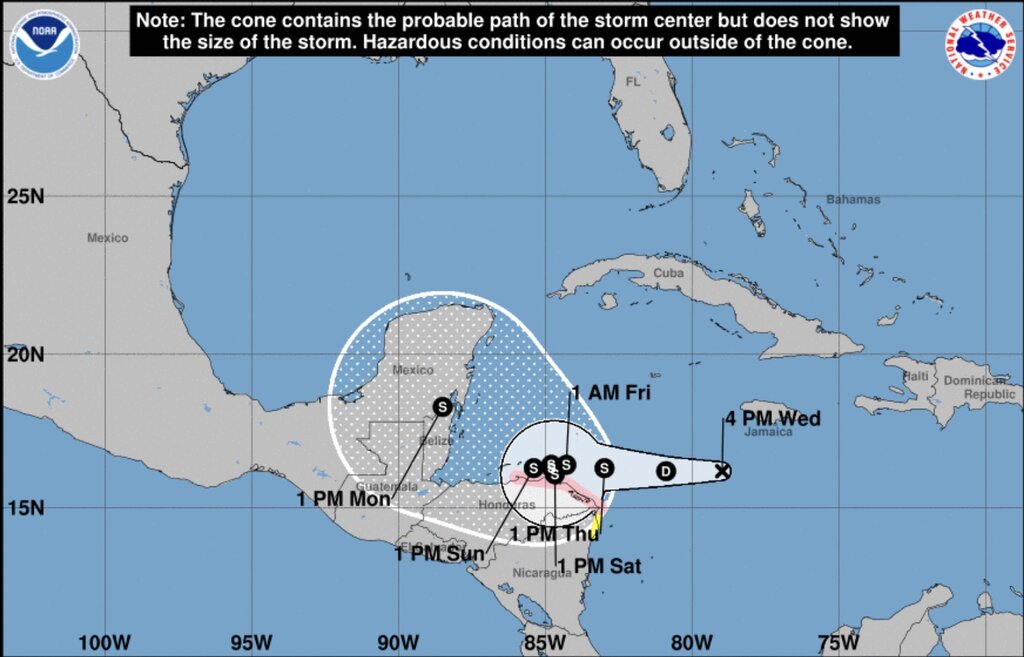According to the latest hurricane report from USA Today, the newest storm of the Atlantic hurricane season will be named Sara, with wind speeds up to 180 km/h.
Forecasters at the U.S. National Hurricane Center predict that a low pressure system with the potential to become Hurricane Sara is moving westward in the Caribbean Sea. The low pressure system could become Hurricane Sara today (November 14), local time.
The U.S. National Hurricane Center said the depression was about 740 kilometers (460 miles) east of Isla Guanaja, Honduras. The Honduran government has issued a hurricane warning and Nicaragua has issued a tropical storm warning. Storm Sara is forecast to bring up to 760 mm (30 inches) of rain to northern Honduras.
Some computer hurricane forecast models show Sara could become a major hurricane threatening the Florida coast, although it is still "too early to determine the impacts this system may have on the Gulf of Mexico, Florida and Cuba," the US National Hurricane Center noted.

The US National Hurricane Center had previously predicted that Sara would become a tropical storm near the coast of Honduras on November 15 and remain as a tropical storm for several days. It would then make landfall in Belize on November 18, bringing heavy rains to Jamaica and Central America through early next week.
Private weather forecaster AccuWeather predicts Hurricane Sara will strengthen into a Category 3 hurricane by the end of the week. “AccuWeather hurricane experts are increasingly concerned about the potential for catastrophic, life-threatening flooding across Central America, particularly in the steep terrain of Honduras and Nicaragua,” said Jon Porter, chief meteorologist at AccuWeather.
How Hurricane Sara interacts with Central America and other weather patterns will determine the intensity and landfall of the newest storm of the 2024 hurricane season. Michael Lowry, a hurricane expert for WPLG-TV in South Florida, said that Hurricane Sara could take advantage of “some unusually favorable late-season weather conditions” to strengthen early next week.
Sea temperatures in the Caribbean are warmer than normal and the Gulf of Mexico hit a record high this week, according to ocean heat content charts released by Brian McNoldy, a senior research fellow at the University of Miami’s Rosenstiel School. Warm ocean waters fuel intensifying storms.
Given the environmental conditions in the region, some models used to forecast intensity suggest that the potential storm of the 2024 hurricane season could strengthen into a Category 3 hurricane, with winds above 180 km/h, and one model even predicts that Hurricane Sara could reach Category 4 hurricane status, according to meteorologist Levi Cowan's website Tropicaltidbits.com.
Hurricanes occurring in November are unusual. According to NOAA data, only three hurricanes have previously impacted or made landfall in the United States in November, two in 1861 and 1935, and Hurricane Kate in 1985.
The 2024 Atlantic hurricane season is so far the 11th most intense based on the number of storm days and accumulated storm energy since meteorologists began observing hurricanes with satellites in 1966.











